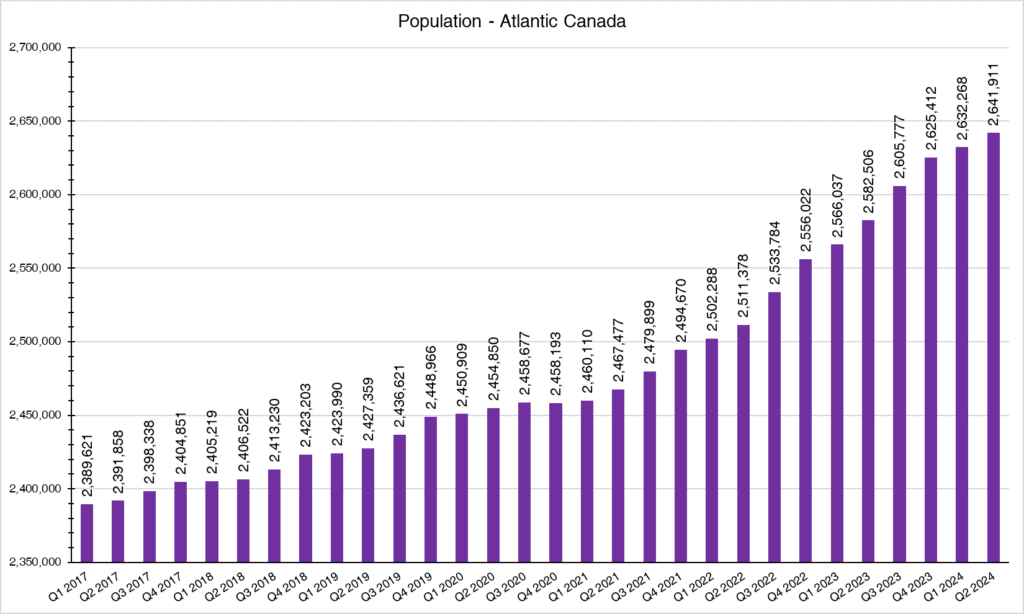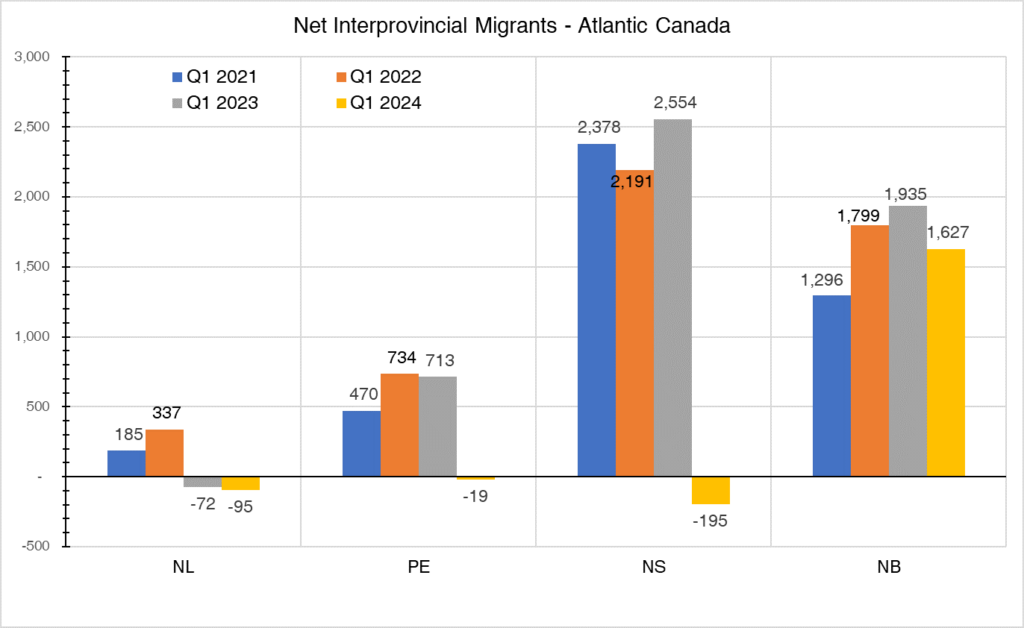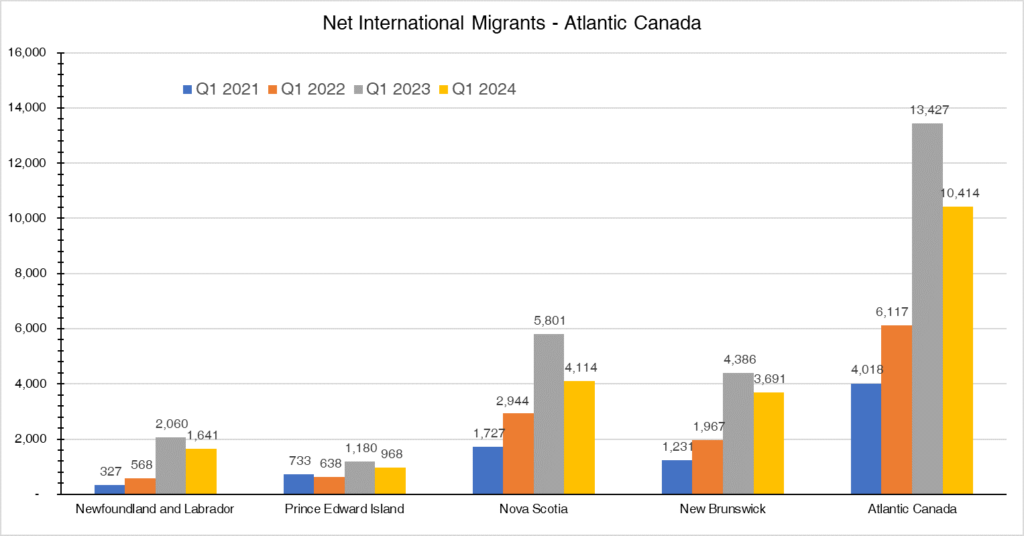
Interprovincial Migration Trends
New Brunswick stands out as the only province in Atlantic Canada that recorded a net positive inflow of interprovincial migrants in Q1 2024, gaining 1,627 new residents. In contrast, Nova Scotia, Prince Edward Island, and Newfoundland and Labrador experienced a net loss of residents to other provinces, losing 195, 19, and 95 people respectively.

Source: Statistics Canada & TDP
The majority of new residents moving to Atlantic Canada are coming from Ontario, with 6,321 former Ontarians relocating to the region in Q1 2024. However, Atlantic Canada also saw significant outflows, with 3,533 residents moving to Ontario and 2,806 to Alberta.
Which provinces did these new residents comes from in Q1 2024?

Source: Statistics Canada & TDP
Which provinces did Atlantic Canadians leave for?

Source: Statistics Canada & TDP
International Migration and Natural Growth
When examining international migration, the data reveals a declining trend across all four provinces in Atlantic Canada. The most substantial decrease occurred in Newfoundland and Labrador, where net international migration dropped by 2,060 between Q1 2023 and Q1 2024. Furthermore, the number of non-permanent residents moving to Atlantic Canada hit a low of 28 in Q1 2024, the lowest since Q1 2022.
Net International Migrants

Source: Statistics Canada & TDP
It is also important to note that the region has not experienced positive net natural growth (births minus deaths) since Q1 2013. Deaths continue to outnumber births in Atlantic Canada with there being no contribution to the overall population growth through net natural growth since Q1 2023. This ongoing trend highlights the challenges Atlantic Canada faces in maintaining population growth through natural means.
Also, the number of non-permanent residents moving to Atlantic Canada in Q1 2024 was 28, the lowest since Q1 2022.

Source: Statistics Canada & TDP

Source: Statistics Canada & TDP
Conclusion
The population dynamics in Atlantic Canada present a mixed picture of growth and decline. While the region continues to attract new residents from other provinces, particularly Ontario, the overall growth rate has slowed. The decline in international migration and persistent negative natural growth underscore the demographic challenges the region must address. Policymakers and stakeholders need to consider these trends when planning for the future to ensure sustainable growth and development in Atlantic Canada.
For more detailed insights and data analysis, feel free to reach out to Turner Drake & Partners for comprehensive reports and expert advice on regional demographic trends.

Jigme Choerab is manager of our Economic Intelligence Unit. For more information about how you can benefit from the unique expertise of our Planning & Economic Intelligence team, contact Jigme at (902) 429-1811 or .
